Franklin Electric Co., Inc. (NASDAQ: FELE) proudly hosted its annual “Future Franklineers Day” on July 22, welcoming more than 60 elementary, middle school, and high school students from the community for a day of learning and career exploration. The exclusive event allowed students of Franklin Electric employees to tour corporate headquarters, gain insights into the Read more
technology

Franklin Electric Co., Inc. (NASDAQ: FELE) proudly hosted its annual “Future Franklineers Day” on July 22, welcoming more than 60 elementary, middle school, and high school students from the community for a day of learning and career exploration. The exclusive event allowed students of Franklin Electric employees to tour corporate headquarters, gain insights into the water systems industry, and learn about STEM (science, technology, engineering, and mathematics) careers in a real-world setting.
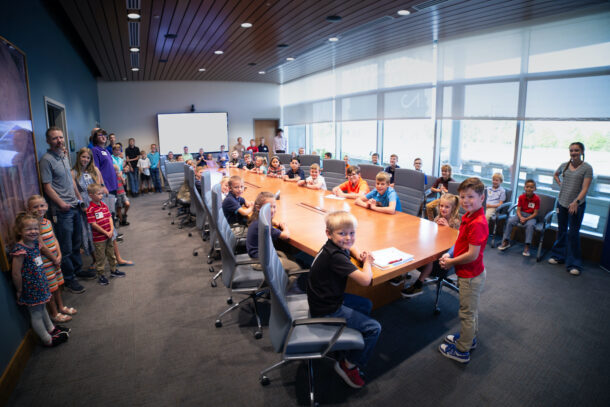
Students participated in interactive tours that allowed them to explore the company’s state-of-the-art research, development, and testing facilities. Each attendee spent time learning how motors operate and took home a kit to build their own mini motor. Company engineers, designers, and executives were on hand to answer questions and share their expertise. The event also provided networking opportunities, allowing Franklin Electric families to build lasting connections.
“Showing children a variety of STEM career possibilities is essential to the future of the industries we serve,” said Amanda Hecht, Director of Human Resources—Talent. “Future Franklineers Day is a chance for young learners to see firsthand how Franklin Electric innovation is a part of their everyday lives—from the water they drink to the cars they ride in.”
Franklin Electric proudly sponsors various local programs and education-based initiatives throughout Allen County, including United Way and Junior Achievement, to support future community leaders and beyond.

RIDGID®, a part of Emerson’s professional tools portfolio, hosted “We Love STEM Day” in June for 50 local students in grades three through eight. The annual event, held at RIDGID global headquarters in Elyria, Ohio, gave young learners the chance to see the real-world role science, technology, engineering, and mathematics (STEM) plays in critical jobs Read more
RIDGID®, a part of Emerson’s professional tools portfolio, hosted “We Love STEM Day” in June for 50 local students in grades three through eight. The annual event, held at RIDGID global headquarters in Elyria, Ohio, gave young learners the chance to see the real-world role science, technology, engineering, and mathematics (STEM) plays in critical jobs, such as manufacturing. Throughout the day-long experience, students participated in group projects, interactive learning games and more.

“STEM learning encourages students to explore new ideas and solutions to real-world challenges, equipping them with the skills and knowledge they need to thrive as students and future professionals,” said Rose Hitchens, event chair and chapter lead, RIDGID Women’s Impact Network for Emerson. “We loved experiencing the energy this year’s students brought to the day’s activities. Even the youngest participants had the chance to see how the concepts they’re learning in school can be applied to what we do every day at RIDGID.”
Students participated in a variety of hands-on activities, including making balloon cars, robotic hands, pinwheels, water filtration systems and solar-powered engines. Each activity allowed students to learn about the importance of mechanical engineering, electrical engineering, renewable energy and natural resources in manufacturing.
RIDGID is a proud supporter of local programs and education-based initiatives throughout Lorain County, including the Elyria school makerspaces that reinforce STEM learning. The company also partners with current and future trade professionals and regularly invests and donates products. For years, its leaders have served on industry boards to help strengthen the trades.

Emerson’s professional tools business, which includes RIDGID as well as the Greenlee® and Klauke® brands, provides the industry’s broadest portfolio of advanced, reliable tools and technologies for the mechanical, electrical and plumbing trades globally. Visit emerson.com/professionaltools for more information.
RIDGID®, Greenlee® and Klauke® are trademarks of Emerson or its subsidiaries. All other trademarks belong to their respective holders.
AHR Expo Announces Open Call for the 2022 Innovation Awards; Entries Accepted through August 3, 2021
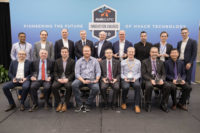
The AHR Expo (International Air-Conditioning, Heating, Refrigerating Exposition) 2022 Innovation Awards call for entries is now open. The annual competition, held in conjunction with the Show, honors the most innovative and original products, systems and technologies in HVACR. Exhibitors are encouraged to submit new or upgraded products to compete. Entries will be accepted through August Read more
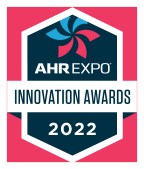 The AHR Expo (International Air-Conditioning, Heating, Refrigerating Exposition) 2022 Innovation Awards call for entries is now open. The annual competition, held in conjunction with the Show, honors the most innovative and original products, systems and technologies in HVACR. Exhibitors are encouraged to submit new or upgraded products to compete. Entries will be accepted through August 3, 2021. The 2022 AHR Expo will be hosted at the Las Vegas Convention Center in Las Vegas, NV January 31 through February 2, 2022. To request more information about the Innovation Awards, or to receive forms for entry, please email Kim Pires at kpires@iecshows.com.
The AHR Expo (International Air-Conditioning, Heating, Refrigerating Exposition) 2022 Innovation Awards call for entries is now open. The annual competition, held in conjunction with the Show, honors the most innovative and original products, systems and technologies in HVACR. Exhibitors are encouraged to submit new or upgraded products to compete. Entries will be accepted through August 3, 2021. The 2022 AHR Expo will be hosted at the Las Vegas Convention Center in Las Vegas, NV January 31 through February 2, 2022. To request more information about the Innovation Awards, or to receive forms for entry, please email Kim Pires at kpires@iecshows.com.
“First and foremost, we are thrilled to gather again in Las Vegas for the 2022 AHR Expo. Despite not coming together in 2021, we celebrated ten outstanding category winners and the Product of the Year, Infinitum Electric’s IEq,” said Mark Stevens, Manager of AHR Expo. “This competition celebrates the HVACR industry’s most innovative solutions through leadership in design, construction and execution. Each year we look forward to seeing the advancements in HVACR through the snapshot that the Innovation Awards provides. It is an excellent indicator of the exciting Show ahead.”
In 2003 the AHR Expo debuted the Innovation Awards as a means to highlight those in the HVACR industry creating innovative solutions for new and existing challenges and new avenues for growth. They aim to honor the most inventive, useful and original products, systems and technologies pushing boundaries and disrupting the market today.
Entries are evaluated by a panel of third-party ASHRAE members with over 20 years of professional engineering experience. The review process includes points tallied based on application, innovation, value and market impact. Winners are selected from ten industry categories, including: building automation; cooling; heating; indoor air quality; plumbing; refrigeration; software; sustainable solutions (formerly green building); tools and instruments; and ventilation. Winners and finalists demonstrating superior innovative design, creativity, application and performance will be recognized at the 2022 Show, on the AHR Expo website and social media channels, as well as in industry media coverage leading up to the Show.
An overall Product of the Year will be selected from the pool of category winners and will be announced at the Show. This prestigious honor is awarded based on exceptional leadership in HVACR innovation.
Eligibility and general information about the 2022 Innovation Awards
- The competition is open to exhibitors with a confirmed space contract, as well as a deposit payment on file for the 2022 AHR Expo.
- Eligible products include those that will be exhibited at the 2022 AHR Expo in Las Vegas and must be available for sale by January 2022.
- Exhibitors are permitted to submit one product per category.
- Product entries are limited to one product category.
- Products that have previously won an AHR Expo Innovation Award are not eligible, however, those products that have previously been named a category finalist may be re-entered.
- Completed entry forms, along with a non-refundable $100 entry fee, must be submitted by Tuesday, August, 3, 2021.
- One winner from each category will be selected. An overall Product of the Year award is selected from all category winners and announced at the 2022 Show.

Entry fees for the 2022 Innovation Awards (approximately $20,000) will be donated to a charitable organization serving the local Las Vegas area community. The donation is generally used to provide HVACR repairs or upgrades. Each year, the AHR Expo works to select a charitable organization within the area where the Show is held.
“This past year has been a catalyst for new ways of thinking and adapting,” continued Stevens. “Our industry has risen to the challenge and provided critical solutions to help us move forward. HVACR is an area of exciting innovation on the global stage and we can’t wait to see what awaits us on the Show floor in Las Vegas.”
Registration for the 2022 AHR Expo is expected to open in July of 2021. Visit the AHR Expo website for updates and to sign up for the Show newsletter.
ABOUT THE AHR EXPO
The AHR Expo is the world’s premier HVACR event, attracting the most comprehensive gathering of industry professionals from around the globe each year. The Show provides a unique forum where manufacturers of all sizes and specialties, whether a major industry brand or innovative start-up, can come together to share ideas and showcase the future of HVACR technology under one roof. Since 1930, the AHR Expo has remained the industry’s best place for OEMs, engineers, contractors, facility operators, architects, educators and other industry professionals to explore the latest trends and applications and to cultivate mutually beneficial business relationships. The next Show, co-sponsored by ASHRAE and AHRI, will be held Jan. 31 – Feb. 2, 2022 in Las Vegas, and is held concurrently with ASHRAE’s Winter Conference.
For more information, visit ahrexpo.com and follow @ahrexpo on Twitter and Instagram.
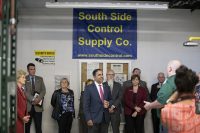
Emphasizing the importance of continued support for career and technical education to help grow the middle class, U.S. Representative Raja Krishnamoorthi (D-IL 8th District) last week visited the innovative learning labs at the College of DuPage Technical Education Center. The center, located on the College’s Glen Ellyn campus, includes 31 classrooms, 16 state-of-the-art laboratories to accommodate Read more
Emphasizing the importance of continued support for career and technical education to help grow the middle class, U.S. Representative Raja Krishnamoorthi (D-IL 8th District) last week visited the innovative learning labs at the College of DuPage Technical Education Center.
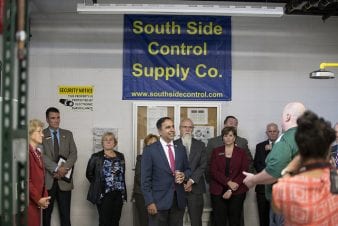 The center, located on the College’s Glen Ellyn campus, includes 31 classrooms, 16 state-of-the-art laboratories to accommodate 1,400 students, as well as space for raw material and vehicular storage. In addition, an adjacent greenhouse provides a hands-on laboratory for Horticulture students.
The center, located on the College’s Glen Ellyn campus, includes 31 classrooms, 16 state-of-the-art laboratories to accommodate 1,400 students, as well as space for raw material and vehicular storage. In addition, an adjacent greenhouse provides a hands-on laboratory for Horticulture students.
Home to the College’s Architecture, Interior Design, Horticulture, Automotive Technology, Computer-Aided Design, Construction Management, Electro-Mechanical Technology, Electronics-Integrated Engineering Technology, Manufacturing Technology, Welding Technology, and Heating, Ventilation, Air Conditioning and Refrigeration programs, the LEED-certified center features two windmills and four solar panels on its roof to provide students with hands-on study of emerging wind/solar energy technologies.
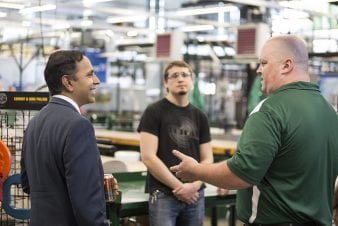 “Everywhere I look, I see a glimpse of something even more interesting, even more innovative, even more thought provoking,” said Krishnamoorthi. “I am proud of what you are doing (at College of DuPage) and what we’re accomplishing in Washington to create more job training and job opportunities to help grow the middle class.”
“Everywhere I look, I see a glimpse of something even more interesting, even more innovative, even more thought provoking,” said Krishnamoorthi. “I am proud of what you are doing (at College of DuPage) and what we’re accomplishing in Washington to create more job training and job opportunities to help grow the middle class.”
The Carl D. Perkins Career and Technical Education Law is the primary federal funding vehicle for skills-based education in the country. Krishnamoorthi and Glenn “G.T.” Thompson of Pennsylvania championed the Strengthening Career and Technical Education for the 21st Century Act, a bipartisan bill and the first reauthorization of the Perkins CTE Act since 2006. Both the House of Representatives and Senate passed the new act, nicknamed Perkins V, and at the end of July, it was signed into law and will go into effect July 1, 2019. Funding will increase during these years, up to $1.3 billion by 2024, while major reforms strengthen what is in place, including special emphasis on career paths.
In FY19, College of DuPage received $1.403 million through a formula that considers the number of students eligible for Pell grants who declare interest in a CTE program. Perkins funding plays a key role in programs throughout campus, including the HVACR program where funding has enabled students to build their own systems trainers.
“Everything you see in this lab is built by our students, not contractors,” said HVACR Program Coordinator Bob Clark. “Everything from the pumps, to the concrete poured for the bases, to all the piping systems that you see running in the lab and students have to manage that so that it’s comfortable.
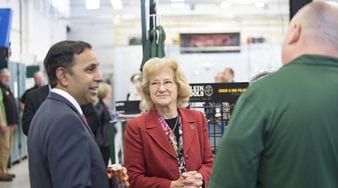 College of DuPage President Dr. Ann Rondeau applauded Krishnamoorthi and his colleagues for their diligence in crafting a supporting bipartisan legislation that directly benefits job seekers.
College of DuPage President Dr. Ann Rondeau applauded Krishnamoorthi and his colleagues for their diligence in crafting a supporting bipartisan legislation that directly benefits job seekers.
“Your dedication to workforce development is to be commended,” she said. “You have been so helpful and a great leader in securing more Perkins funding, which College of DuPage and other institutions may use, in turn, to provide skilled workers to a number of industries.”
Learn more about Career and Technical Education at College of DuPage.
College of DuPage is regionally accredited by the Higher Learning Commission. Serving approximately 25,000 students each term, College of DuPage is the largest public community college in the state of Illinois. The College grants seven associate degrees and offers more than 170 career and technical certificates in over 50 areas of study.

It’s good to be in favor with a design professional; especially if you introduce them to a technology that gives them an edge in design. I found great success over the years and working closely with architectural and engineering firms and sharing information freely that can help him to improve building design. It’s been a Read more
It’s good to be in favor with a design professional; especially if you introduce them to a technology that gives them an edge in design. I found great success over the years and working closely with architectural and engineering firms and sharing information freely that can help him to improve building design.
It’s been a busy year or two in the geothermal industry. As an advocate and consultant for geothermal technologies, I have made it my goal to publish columns on the technology and professional magazines of all kinds. One of my favorites is Mechanical Hub. I very much enjoy the online presence, and the following of the fine people that read and write for Mechanical Hub.
I mentioned that I have been busy, and a lot of that centers around various governments and provinces placing geothermal programs into effect. We have placed thousands of hours of effort and research into these programs. There are some amazing takeaways that we’ve discovered from all of this. I’m sure you’ll agree as you read on that there is some merit to what we’ve learned.
While it’s certainly true that contractors have a lot of say in the type of system that goes into a building, this is limited, often times to singular design-build projects and those projects are often smaller and lower-profile projects. We have found that engaging design professionals can provide more lasting results.
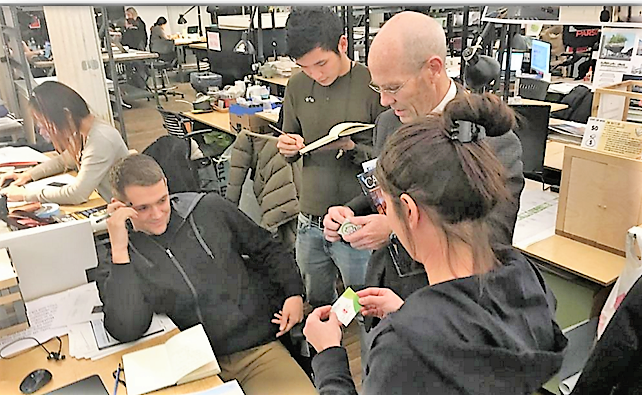
By “we,” I mean primarily the folks in New York State; the New York Geothermal Energy Association (NY-GEO) and the New York State Energy Research and Development Authority (NYSERDA). They’ve had a remarkably successful run the last few years as they’ve engaged the government of New York State at many levels, created new positions at NYSERDA, and have instituted programs that are designed 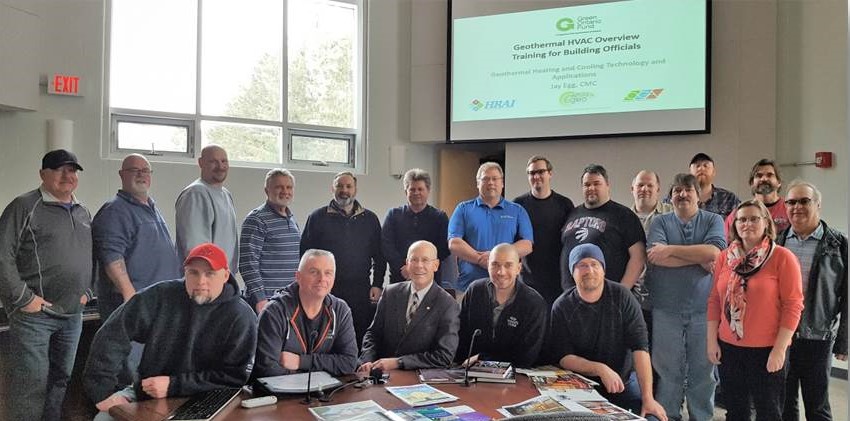
Before I share the challenge that was issued to these architects and design professionals, I would like to give a little bit of information on the structure of the presentation created. Most of the design professionals that have even heard of geothermal exchange think that there is only one way to do it. Most of them are familiar with the boreholes drilled into the ground that accept the insertion of a pair of pipes with a u-bend at the bottom of the hole. Of course, this is a vertical closed-loop geothermal system. And, to be fair, most of the systems installed are engineered in this fashion.
However, there are several different ways to design geothermal exchange. We have found that most designers don’t realize there are so many variables. Once the variables are shared, and the applications are illustrated over the course of a day, these design professionals tend to become very comfortable with these various types of geothermal exchange systems. Just as a refresher, there are five different types of major types of geothermal Exchange. They are:
- Vertical closed loop
- Horizontal closed loop,
- Standing column well (SCW)
- Class V thermal (Ground-Water) exchange,
- Surface water exchange (Lakes, ponds, rivers, etc.)
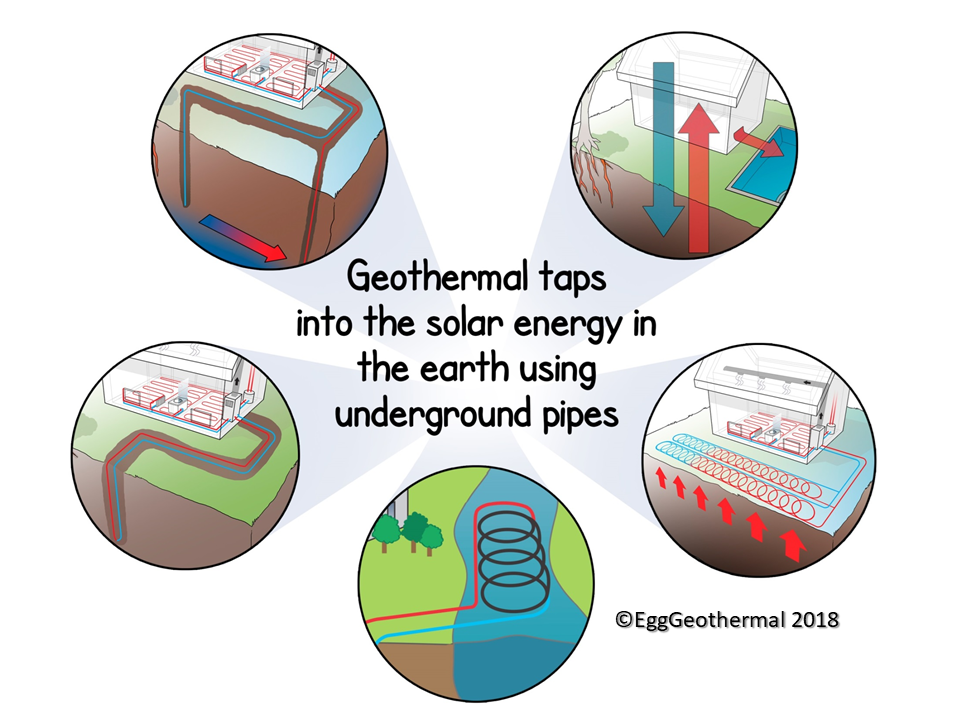
Out of these several different types of exchangers, there are practically limitless variations to explore. Part of the purpose of the presentations was not only to share the various ways to do geothermal but to illustrate some actual case studies and get the creative juices flowing with these design professionals. It was amazing to watch. The question asked at the end of each of these sessions was, “can you think of any reason that you would not offer geothermal exchange to a client the first time, every time?” The answer was overwhelmingly affirmative. The key is to have a full day of immersion in the technology to become comfortable with it.
How do you get a busy professional to sit down long enough to get a full day of their attention? The answer was to make it part of continuing education units (CEUs) for architects and engineers. This model was so successful that it’s been shared a dozen more times in the province of Ontario as they began to roll out their geothermal heating and cooling program. Now, it has been added as part of the educational curriculum for the international Ground Source Heat Pump Association (IGSHPA).
This latest edition to the IGSHPA website is amazing ; now architects, engineers, and design professionals from all areas of Industry can go online, learn a lot of useful information, similar to the programs shared in cities throughout New York and Ontario, and get continuing education units for their efforts.
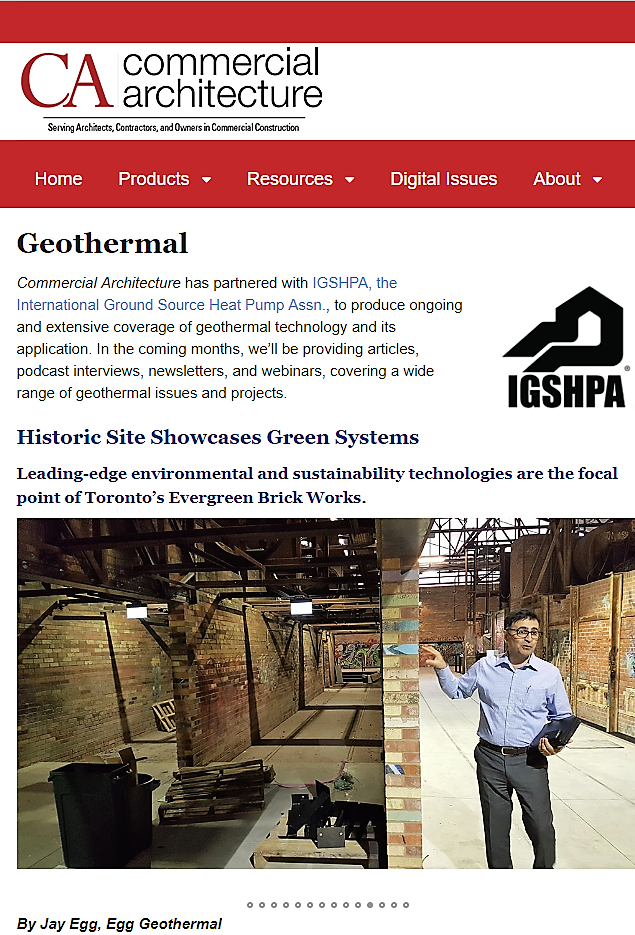
So as to the title of this article, if you want to make a real friend in the industry, and increase the implementation of geothermal heat pumps, share the IGSHPA training with them, and tell them all about it. Maybe you don’t know an architect, engineer or designer personally, but you know of some major firms in your area. Schedule a lunch and learn with them for the price of a catered lunch. You can have a captive audience for an hour, and share a little bit about the merits of geothermal. I guarantee that you will gain some friends in the design industry in this way.
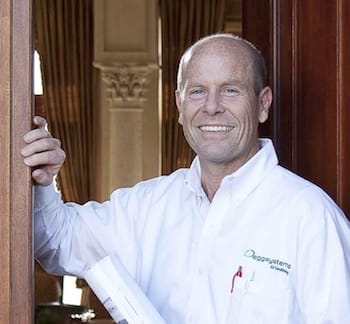
EggGeothermal is a voting member on the IGHSPA Advocacy Committee, the Uniform Mechanical Code Committee for the International Association of Plumbing and Mechanical Professionals (IAPMO). Jay Egg is a geothermal consultant, writer, and the owner of EggGeothermal. He has co-authored two textbooks on geothermal HVAC systems published by McGraw-Hill Professional.
He can be reached at jayegg.geo@gmail.com
